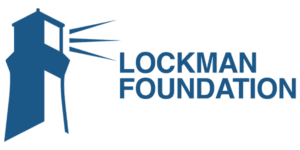The Lockman Foundation History
On December 3, 1942, Dewey & Minna Lockman donated their large citrus ranch, located in La Habra, California, to form The Lockman Foundation. The Foundation was to be a non-profit corporation with the established purpose of promoting Christian evangelism, education, and benevolence.
Expanding upon their successful adult outreach, Lockman created a summer Bible school program aimed at children in the community. From 1944-1946, students from the Bible Institute of Los Angeles (now known as Biola University) traveled throughout sections of California, holding summer Bible schools at any churches that requested them. Seeing the value of children’s ministry, The Lockman Foundation conceptualized and financed Christian Time Released Education. This ministry was first started in Anaheim, CA. It soon expanded to other nearby cities and allowed grade school children to be released from the classroom for one period each week for religious instruction and study. Eventually over 20,000 children were reached through this innovative ministry.
This project was fast-tracked in 1960. Dewey Lockman tithed the remainder of his family’s holdings to the Foundation. Three years later the New American Standard New Testament was published in 1963. Meanwhile, the two-volume Amplified Old Testament was finished in 1964 with the complete Amplified Bible printed the following year. Work continued on the New American Standard Bible and on August 28, 1971, the NASB was dedicated at a public service held at Dewey Lockman’s home church, First Baptist Church of Anaheim, California. The desire for a modern literal accurate translation proved overwhelming and in 1977 the Christian Booksellers’ Association recorded the NASB as the number one selling Bible in America.
Following the success of the NASB, The Lockman Foundation continued its far-reaching work in foreign language translation and produced the Korean Standard Bible, the New Chinese Bible (Mandarin/Cantonese), the New Chinese Bible (mainland simplified script), the New Hindi Bible (India), La Biblia de las Américas (Spanish), and Nueva Biblia de las Américas (Spanish) using the same principles of literal translation used in the NASB.
The work of The Lockman Foundation continues to this day. Since the initial printing in 1971, the New American Standard Bible has been updated several times to keep the English modern and readable. First in 1977, next in 1995, and most recently in 2020, these updates allow the NASB to remain true to its founding vision by incorporating the most recent and most accurate Biblical scholarship and modernizing the English so that it continues to speak to each generation. These refinements of accuracy and grammar ensure a clear understanding of God’s Word for everyone.
In 2021 The Legacy Standard Bible was completed by a team of scholars from The Master’s Seminary and University. The LSB is a direct update of the NASB 1995 edition and fundamentally endeavors to uphold and honor it.
